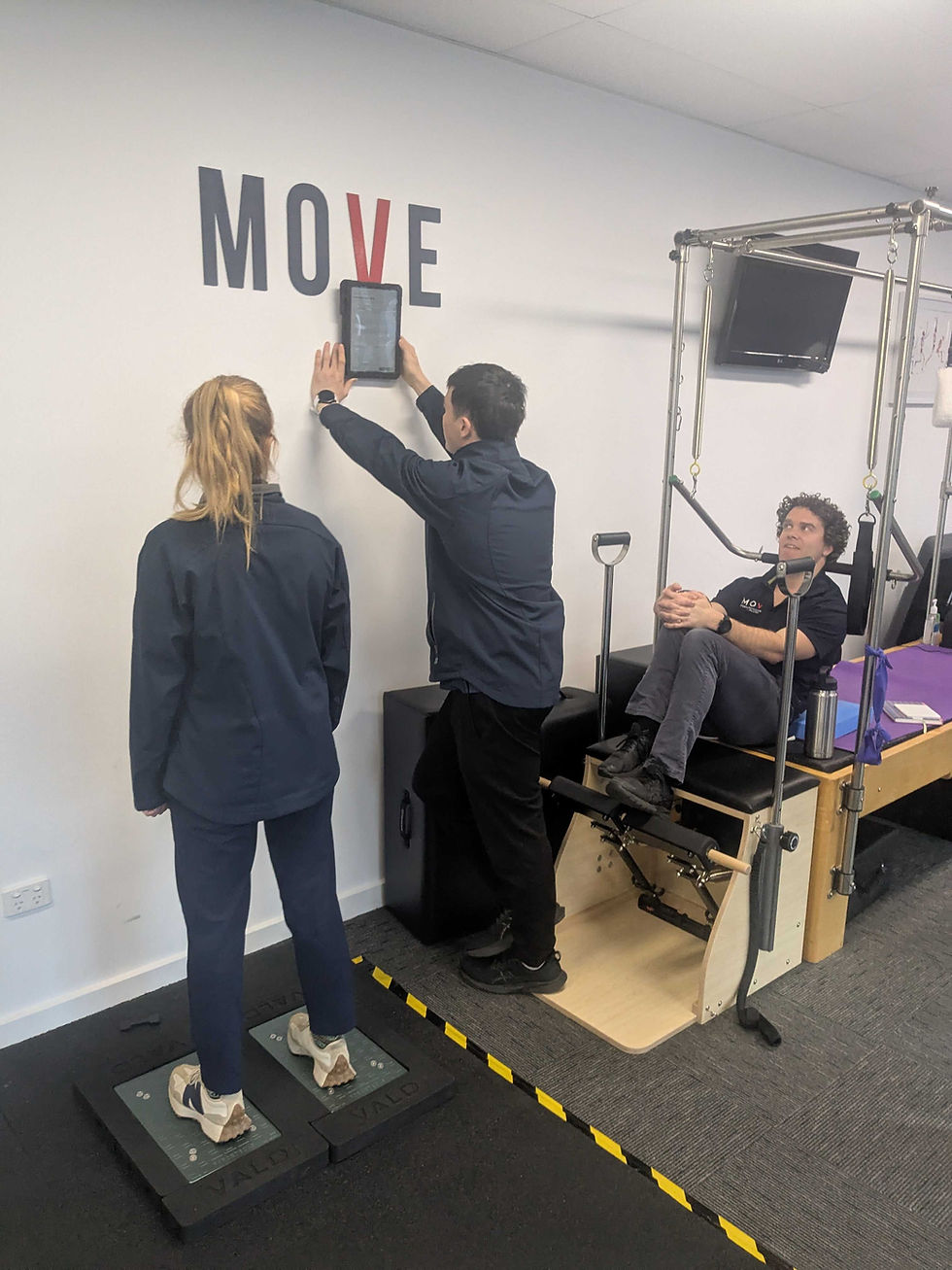Rolled or Sprained Ankle Recovery? A Physio's Guide - What to Do Next?
- Tanner Nyholm

- Apr 14
- 3 min read

Whether you're sprinting down the field, changing direction on the netball court, or stepping awkwardly on uneven ground, rolling your ankle can happen when you least expect it.
Getting your ankle recovery right from the start.
Knowing how to manage the injury right away can make all the difference in your recovery. If you’re dealing with an ankle injury in Geelong, seeking expert ankle physio in Geelong is key to preventing long-term damage and getting started moving in the right direction. Here’s your complete guide to healing your ankle and getting back to what you love.
Immediate Care (The First 24-48 Hours)
Follow the PEACE & LOVE Protocol
Gone are the days of Rest, Ice, Compression and Elevation. Here comes the new age ...
P.E.A.C.E
Protect: Avoid activities that increase pain or swelling for the first few days.
Elevate: Raise the injured leg above heart level to reduce swelling.
Avoid anti-inflammatories: These can impair the body's natural healing process in the initial phase.
Compression: Use a bandage or compression wrap to manage swelling and provide support.
Educate: Learn about your injury and avoid over-treatment or excessive rest.
Load: Gradually reintroduce movement and weight-bearing activities as tolerated.
Optimism: Maintain a positive mindset to support your recovery.
Vascularisation: Engage in pain-free cardio activities to promote blood flow and tissue healing.
Exercise: Perform targeted exercises to rebuild strength, mobility, and stability.
Pain Management:
Over-the-counter pain relievers like ibuprofen or paracetamol can reduce discomfort.
Avoid anti-inflammatory medication in the first 48 hours if bruising is present, as inflammation is a natural healing response.
When to Consider an X-ray:
If you suspect a more serious injury, the Ottawa Ankle Rules can help determine if an X-ray is needed. Seek medical attention if you experience any of the following:
Inability to take four steps (immediately after injury and during assessment).
Tenderness over the lateral or medial malleolus (ankle bones).
Tenderness at the base of the 5th metatarsal (outer foot edge).
Tenderness at the navicular bone (inner arch of the foot).

Early Rehabilitation (48 Hours - 1 Week)
As pain and swelling decrease, start gentle mobility exercises to improve movement and reduce stiffness.
Key Exercises
Ankle Alphabet: Trace the alphabet in the air with your foot to encourage movement. This can often be done in the shower where your ankle will feel great!
Toe Taps: Gently tap your toes while seated to promote circulation.
Seated Calf Raises: Sit with your foot flat on the floor, then slowly raise your heel to activate your calf muscles.
Gentle ROM Exercises --->First day
Intervention and progressive rehab are key to a strong recovery.
Exercises to complete in the first week of Ankle Injury
Heel Toe Walking
Banded Exercises
Talk to your physio at Move to know what strength band you should start with.
Calf Raises Front Foot up High
Supportive Measures:
Use taping or an ankle brace for added stability during daily activities.
Continue compression if swelling persists.
Strengthening and Return to Sport (1-3 Weeks Onward)
Building strength, balance, and control is crucial to avoiding re-injury.
Recommended Exercises:
Resistance Band Work: Strengthen the ankle through resisted movements (plantarflexion, dorsiflexion, inversion, and eversion).
Balance Drills: Start on flat ground, then challenge yourself on a cushion or wobble board.
Calf Raises: Perform both double- and single-leg variations to improve strength.
Step-Through Drills: Controlled stepping and hopping exercises improve ankle stability under load.

Sport-Specific Drills:
Gradually reintroduce sport-specific movements like side-stepping, pivoting, and jumping.
Prioritize controlled movements before progressing to high-intensity drills.

Preventing Future Ankle Injuries:
Warm-Up Well: Include dynamic movements that activate your calves, ankles, and feet.
Strengthen Supporting Muscles: Strong glutes, calves, and core improve overall stability.
Proprioceptive Training: Balance exercises enhance your body's awareness, reducing injury risk.
Supportive Footwear: Choose shoes designed for your sport to improve ankle stability.
By following these steps, you can recover effectively and confidently return to your sport.
When to See a Physiotherapist?...........
Consult a physiotherapist if:
Your pain is severe or persistent.
Bruising and swelling don't improve.
Walking remains difficult after several days.
You suspect a fracture or ligament tear.
If you are unsure of need help crafty a plan what to do next
At Move our physios can esign a tailored rehab program to restore full ankle function and prevent future instability.
Have questions? Reach out to us, and we’ll be happy to provide the support you need.
Contact us today:
Email: info@movesportsphysio.com.au
Phone: 0352226868



